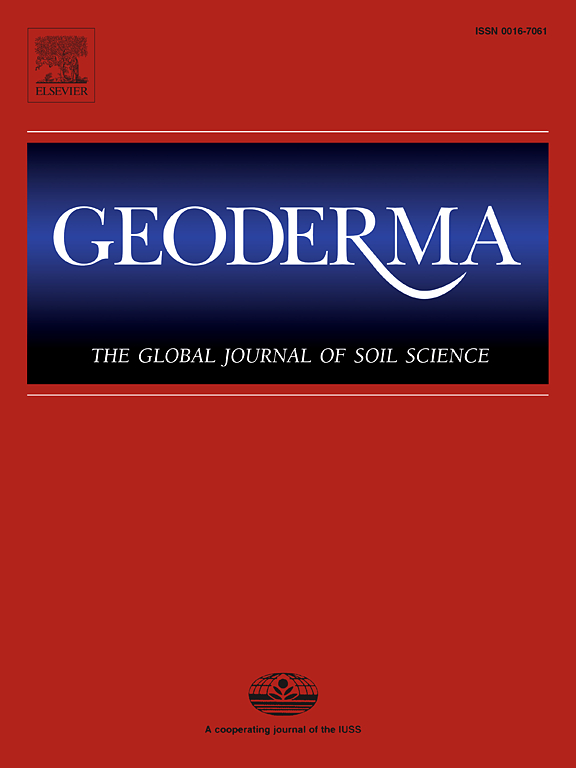Early pedogenesis of a young Technosol made from organic wastes
IF 6.6
1区 农林科学
Q1 SOIL SCIENCE
引用次数: 0
Abstract
Constructed soils based on urban waste, i.e. Technosols appear as a promising solution to enhance circular economy while delivering ecosystem services. Their ability to provide such services depend on their constitution as well as on their temporal evolution and pedogenesis, which is poorly known. We studied during three years the changes in an isolatic Technosol made essentially of organic urban wastes.
The study took place on a Parisian rooftop with an experimental trial of 24 plots. We compared four Technosols with similar upper layers (a mix of biowaste compost and spent mushroom substrate), but with either a mineral (shredded tiles and bricks) or an organic lower layer (shredded wood). Both types were run with and without plants. Technosols were monitored over three years and samples were taken at different times to study pedogenetic processes.
We observed a rapid and sharp volume loss of the Technosols, responsible for an important mass loss, but not leading to any increase in bulk density. A clear physico-chemical differentiation of treatments from the parent materials appeared after one and three years. The Technosoil organic C stocks decreased over time. During three years, all Technosols were a net source of nitrogen and dissolved organic carbon, released in the drainage waters. Identified pedogenesis processes were the same as in natural soils, but the changes were very fast. The key equilibrium between mineralisation of organic matter and its stabilization that must be ensured when creating such Technosols. They show the necessity for long term research on the development of Technosols.

由有机废物制成的Technosol幼体的早期成土过程
以城市垃圾为基础的人工土壤,即Technosols,似乎是一种很有前途的解决方案,可以在提供生态系统服务的同时加强循环经济。它们提供这种服务的能力取决于它们的构造以及它们的时间进化和成土作用,这一点我们知之甚少。我们在三年的时间里研究了一种主要由城市有机废物制成的孤立的Technosol的变化。这项研究是在巴黎的一个屋顶上进行的,共有24块试验田。我们比较了四种技术溶胶,它们有相似的上层(生物垃圾堆肥和废蘑菇基质的混合物),但要么是矿物(碎瓦片和砖),要么是有机下层(碎木头)。这两种类型都在有植物和没有植物的情况下运行。研究人员对技术溶胶进行了三年的监测,并在不同的时间采集了样品,以研究成土过程。我们观察到Technosols的体积损失迅速而急剧,这是一个重要的质量损失,但没有导致任何堆积密度的增加。处理1年和3年后,处理与母材的理化差异明显。技术土壤有机碳储量随时间减少。在三年的时间里,所有的Technosols都是氮和溶解有机碳的净来源,释放到排水水中。确定的成土过程与自然土壤相同,但变化非常快。在创造这样的技术溶胶时,必须确保有机物质矿化和稳定之间的关键平衡。它们表明了对Technosols的发展进行长期研究的必要性。
本文章由计算机程序翻译,如有差异,请以英文原文为准。
求助全文
约1分钟内获得全文
求助全文
来源期刊

Geoderma
农林科学-土壤科学
CiteScore
11.80
自引率
6.60%
发文量
597
审稿时长
58 days
期刊介绍:
Geoderma - the global journal of soil science - welcomes authors, readers and soil research from all parts of the world, encourages worldwide soil studies, and embraces all aspects of soil science and its associated pedagogy. The journal particularly welcomes interdisciplinary work focusing on dynamic soil processes and functions across space and time.
 求助内容:
求助内容: 应助结果提醒方式:
应助结果提醒方式:


